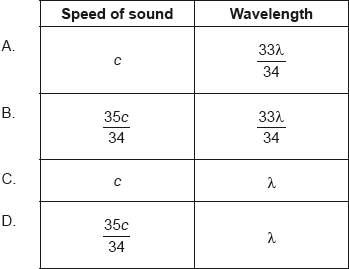| Date | November 2020 | Marks available | 2 | Reference code | 20N.2.HL.TZ0.4 |
| Level | Higher level | Paper | Paper 2 | Time zone | 0 - no time zone |
| Command term | Explain | Question number | 4 | Adapted from | N/A |
Question
Two loudspeakers, A and B, are driven in phase and with the same amplitude at a frequency of . Point P is located from A and from B. The speed of sound is .
In another experiment, loudspeaker A is stationary and emits sound with a frequency of . The microphone is moving directly away from the loudspeaker with a constant speed . The frequency of sound recorded by the microphone is .
Deduce that a minimum intensity of sound is heard at P.
A microphone moves along the line from P to Q. PQ is normal to the line midway between the loudspeakers.
The intensity of sound is detected by the microphone. Predict the variation of detected intensity as the microphone moves from P to Q.
When both loudspeakers are operating, the intensity of sound recorded at Q is . Loudspeaker B is now disconnected. Loudspeaker A continues to emit sound with unchanged amplitude and frequency. The intensity of sound recorded at Q changes to .
Estimate .
Explain why the frequency recorded by the microphone is lower than the frequency emitted by the loudspeaker.
Calculate .
Markscheme
wavelength ✓
path difference ✓
OR «half-wavelengths» ✓
waves meet in antiphase «at P»
OR
destructive interference/superposition «at P» ✓
Allow approach where path length is calculated in terms of number of wavelengths; along path A () and
path B () for MP2, hence path difference wavelengths for MP3
«equally spaced» maxima and minima ✓
a maximum at Q ✓
four «additional» maxima «between P and Q» ✓
the amplitude of sound at Q is halved ✓
«intensity is proportional to amplitude squared hence» ✓
speed of sound relative to the microphone is less ✓
wavelength unchanged «so frequency is lower»
OR
fewer waves recorded in unit time/per second «so frequency is lower» ✓
✓
✓
Examiners report
This was answered very well, with those not scoring full marks able to, at least, calculate the wavelength.
Most candidates were able to score at least one mark by referring to a maximum at Q.
Most candidates earned 2 marks or nothing. A common answer was that intensity was 1/2 the original.
HL only. The majority of candidates answered this by describing the Doppler Effect for a moving source. Others reworded the question without adding any explanation. Correct explanations were rare.
HL only. This was answered well with the majority of candidates able to identify the correct formula and the correct values to substitute.


